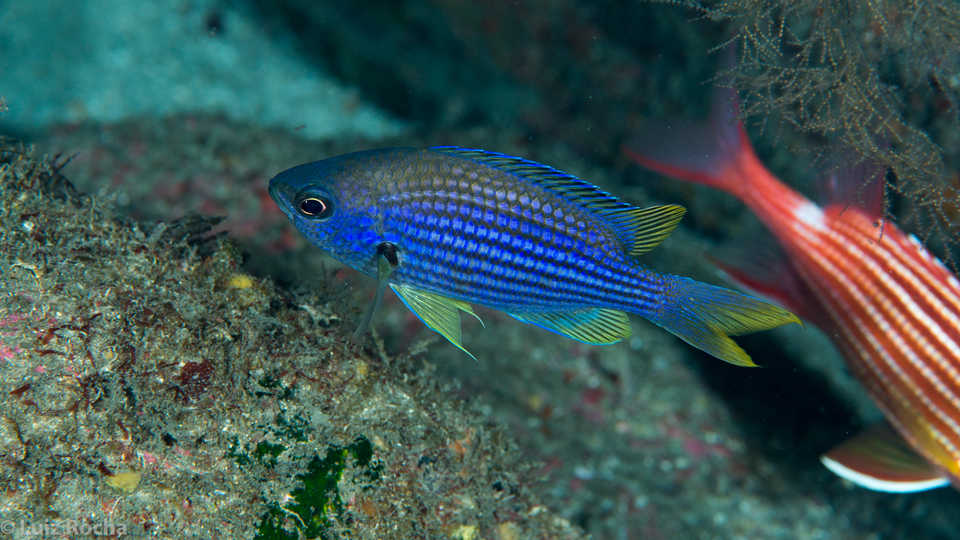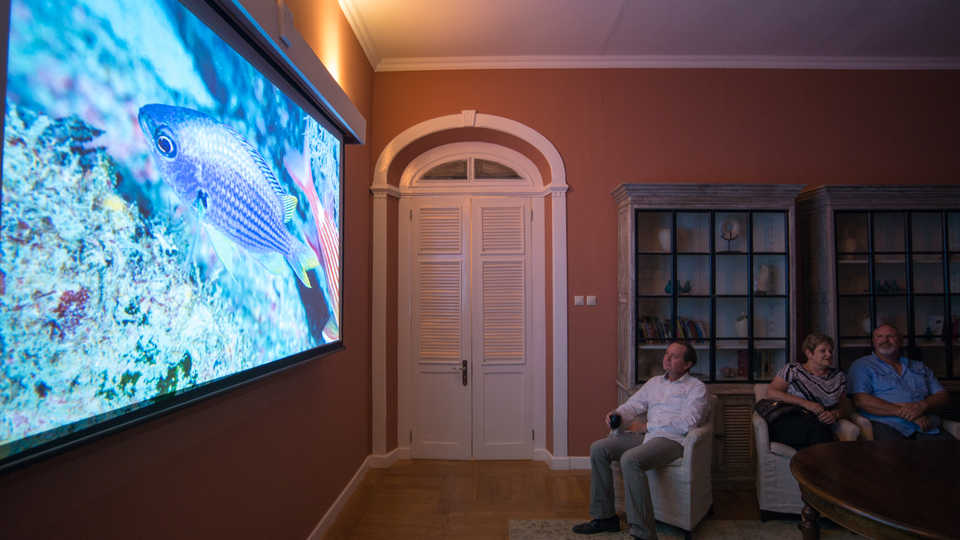We are all still missing the large fishes, but our final days in Principe are very exciting. If you remember from one of our first blogs, the water here is clear and warm, so warm that most of us are diving in just board shorts. So when we dove the south side of Galé, we were all surprised to encounter a shallow thermocline (a distinct layer of abrupt temperature change) where the temperature dropped by a whopping 10°C! Below this thermocline the fauna was very different, and we recorded several species that had never been seen in Principe before, including the beautiful Azores Chromis (Chromis limbata). We also photographed and collected a few specimens of unknown, likely new species.
Back at home base at the Hotel Roça Belo Monte, it is time to talk about our findings to local authorities, environmentalists, representatives of NGOs and the public in general. We will try to establish the need for marine protected areas in the island. Even though the lush tropical rainforests of Principe seem well protected, there are no marine protected areas here, and overfishing is evident in all places we visited.
Part of Hugulay and Renato’s work is to interview local fishermen and try to get more clues of how bad overfishing is here. And their interviews reveal a problem that was even bigger than we thought: there are reports of dynamite fishing! You would think an island with just over 7,000 inhabitants wouldn’t need to resort to such drastic measures, but the main protein source for the Principe (and Sao Tome) people is fish, they eat fish almost every day. Unfortunately, it is common practice everywhere in the world to use more destructive fishing gear as fish become less abundant. It usually starts with hook and line from the beach, then boats become a necessity, then nets, and finally highly destructive fishing using dynamite and cyanide.
We ended up giving two talks, one to an audience composed mostly of visitors from the African Development Bank and another to a miscellaneous assortment of local Principe developers, Biosphere Reserve staff, NGO representative and hotel investors. Both audiences were very engaged and asked tons of questions. At times, it seemed like we were preaching to the choir, as everyone agreed that the island needed marine reserves.
The big question always comes down to a socio-economic aspect: how do we convince the local population to fish less when this is their main and cheaper source of protein? On the one hand, you want them to fish less, but if they do that, their impact on land will increase. So in the end what you really need is a sustainable fishery strategy, which is achievable on the long run, but will take some time to implement. And because the income of a section of the population (fishers) will decrease, the general agreement is that activities like eco-tourism should absorb unemployed fishers and augment their income.
In paper it all looks great, but the challenge is to implement it! Our team (with the generous support of Hotel Roça Belo Monte) will continue to visit the island at least once a year to help with this process.
This expedition is supported by the California Academy of Sciences, William K. Bowes, Jr. Foundation, Roça Belo Monte Hotel and the Rufford Foundation.
For more pictures and updates, follow @CoralReefFish on Twitter and Instagram!



